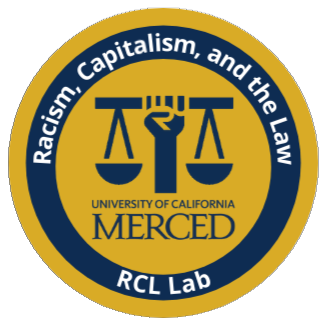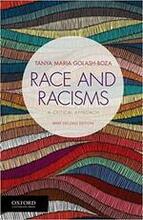Are predictions that Hispanics will make up 25 per cent of the US population in 2050 reliable? The authors of this paper argue that these and other predictions are problematic insofar as they do not account for the volatile nature of Latino racial and ethnic identifications. In this light, the authors propose a theoretical framework that can be used to predict Latinos’ and Latinas’ racial choices. This framework is tested using two distinct datasets – the 1989 Latino National Political Survey and the 2002 National Survey of Latinos. The results from the analyses of both of these surveys lend credence to the authors’ claims that Latinas’ and Latinos’ skin colour and experiences of discrimination affect whether people from Latin America and their descendants who live in the US will choose to identify racially as black, white or Latina/o.
- Home
- Theorizing Race
Theorizing Race
This article responds to the current academic debate on the advantages of bilingualism to the children of immigrants in the United States. The author utilizes data from the 1992–1993 and 1995–1996 Children of Immi rants Longitudinal Study to estimate the effects of bilingualism on efucational outcomes. In contrast to a recent study, the author rovides conclusive evidence that there are advantages to bilingualism beyond the functional ability to communicate with one’s parents. The author also provides evidence that demonstrates that bilingualism is only advantageous in those communities with low levels of English proficiency and high levels of resources and networks.
Race and Racisms, A Critical Approach, Brief Edition, is a topical critical text that engages students in significant questions related to racial dynamics in the United States and around the world. Approximately thirty percent shorter than Golash-Boza’s highly acclaimed comprehensive text, the Brief Edition features a streamlined narrative and is enhanced by its own unique features. It is ideal for instructors who want the flexibility to assign additional readings.Race and Racisms: A Critical Approach engages students in significant questions related to racial dynamics in the U.S. and around the world. Written in accessible, straightforward language, the book discusses and critically analyzes cutting-edge scholarship in the field. Organized into topics and concepts rather than discrete racial groups, the text addresses:* How and when the idea of race was created and developed* How structural racism has worked historically to reproduce inequality* How we have a society rampant with racial inequality, even though most people do not consider themselves to be racist* How race, class, and gender work together to create inequality and identities* How immigration policy in the United States has been racialized* How racial justice could be imagined and realizedCentrally focused on racial dynamics, Race and Racisms, Brief Edition also incorporates an intersectional perspective, discussing the intersections of racism, patriarchy, and capitalism.
The study of U.S. racial and ethnic relations is often reduced to the study of racial or ethnic relations. This article reveals the limitations of a focus on ethnicity or race, in isolation, and instead urges a new framework that brings them together. We consider three cases that have been conceptualized by the ethnicity paradigm as assimilation projects and by the race paradigm as structural racism projects, respectively: (1) African-American entrepreneurs; (2) the Mexican middle class; and (3) black immigrant deportees. We reveal the shortcomings of the ethnicity paradigm to consider race as a structural force or to acknowledge that structural racism conditions incorporation in marked ways; and the limitations of the race paradigm to take seriously group members’ agency in fostering social capital that can mediate racial inequality. Instead, we offer a unifying approach to reveals how ethnicity and race condition members’ life chances within the U.S. social structure.
This article contests the contention that sociology lacks a sound theoretical approach to the study of race and racism, instead arguing that a comprehensive and critical sociological theory of race and racism exists. This article outlines this theory of race and racism, drawing from the work of key scholars in and around the field. This consideration of the state of race theory in sociology leads to four contentions regarding what a critical and comprehensive theory of race and racism should do: (1) bring race and racism together into the same analytical framework; (2) articulate the connections between racist ideologies and racist structures; (3) lead us towards the elimination of racial oppression; and (4) include an intersectional analysis.
Ten years after sociologist Mary Romero lamented the “ideological and theoretical gulf between immigration research and the sociology of race,” researchers have begun to bridge this theoretical gulf by centering critical race theory in studies of migration. Building on these analyses, this article argues that migration flows and immigrant incorporation are shaped not only by white supremacy but also by patriarchy and global capitalism. Insofar as migrants, predominantly from the Global South, are usually racialized as non-white, and come to work in a labor market shaped by exploitation, oppression, and patriarchy, it is critical to think of migrant flows and settlement within the context of what bell hooks describes as a White supremacist capitalist patriarchy. We draw from examples from our research with a broad spectrum of migrants and their children to elucidate how these three systems of oppression shape the experiences of migrants.
Ideal for instructors who want the flexibility to assign additional readings, Race and Racisms: A Critical Approach, Brief Second Edition, is a topical text that engages students in significant questions related to racial dynamics in the United States and around the world. Shorter than Golash-Boza’s highly acclaimed comprehensive text, the Brief Second Edition features a streamlined narrative and is enhanced by its own unique features. New to this Edition: Increased coverage of gender and intersectionality, including a new section on whiteness, class, gender, and sexuality New "Talking about Race" features in the front matter and at the end of each chapter New discussions of biology and ethnicity An expanded section on white privilege Coverage of racial justice social movements such as #OscarsSoWhite Updated "Thinking about Racial Justice" features, which encourage reflection and social involvement
BackgroundEpidemiological studies have described an “acculturation paradox.” Increased acculturation to the United States is associated with increased consumption of dietary fat and decreased consumption of fruits/vegetables.ObjectiveTo expand understanding of the dietary acculturation paradox, this study examined how bicultural Mexican-American women construct ethnic identity and how these identities and identity-making processes relate to perceptions of health and nutrition.DesignWe utilized embedded mixed methods (in-depth interviews; survey).Participants/settingWe analyzed a purposive sample of English-speaking Mexican-American women aged 18 to 29 years (n=24) in rural California to assess ethnic identity and diet beliefs.ResultsParticipants described food as central to expressing cultural identity, usually in terms of family interactions. Mexican food traditions were characterized as unhealthy; many preferred American foods, which were seen as healthier. Specifically, Mexican-American women perceived Mexican patterns of food preparation and consumption as unhealthy. In addition, traditional Mexican foods described as unhealthy were once considered special-occasion foods. Among the participants who expressed a desire to eat healthfully, to do so meant to reject Mexican ways of eating.ConclusionsThis study raises questions about the nature of the “dietary acculturation paradox.” While food—the eating of Mexican foods—is central to the maintenance of ethnic identity throughout acculturation, negative perceptions about the healthfulness of Mexican foods introduce tension into Mexican-American women’s self-identification. This study suggests a subtle contradiction that may help to explain the dietary acculturation paradox: While previous research has suggested that as Mexicans acculturate to the United States they adopt unhealthy diets, this study finds evidence that they do so at least in part due to perceptions that American diets are healthier than Mexican diets. Implications for interventions to improve Latinos’ diets include an emphasis on the family and use of Spanish linguistic cues. Finally, messages that simply advocate for “traditional” diets should be reconsidered because that message is discordant with perceptions of the healthfulness of such foods.
In W.E.B. Du Bois’ Souls of Black Folk, he argued that the problem of the 20th century in the United States was the problem of the color line. Given that de facto and explicit racial discrimination persist, anti-immigrant rhetoric is intensifying, and legal status has become more salient, we argue Du Boisian theory remains relevant for understanding social and political cleavages in the 21st century United States. The intersection of race, ethnicity, and legal status or “racialized legal status” represents a new variation of Du Bois’ “color line,” due to how these statuses generate cumulative disadvantages and exclusion for citizens and immigrants of color, particularly the undocumented. We begin with a review of Du Bois’ double consciousness theory, highlighting the marginalization of African Americans. Next, we apply double consciousness to the 21st century U.S. context to empirically demonstrate parallels between 20th century African Americans and the marginalization faced today by people of color. We close with a discussion about how double consciousness enhances our understanding of citizenship and has also generated agency for people of color fighting for socio-political inclusion in the contemporary United States.
Race and Racisms: A Critical Approach, Third Edition, engages students in significant—and timely—questions related to racial dynamics in the U.S. and around the world. Written in accessible, straightforward language, the book discusses and critically analyzes cutting-edge scholarship in the field. Organized into topics and concepts rather than discrete racial groups, the text addresses: * How and when the idea of race was created and developed* How structural racism has worked historically to reproduce inequality* How we have a society rampant with racial inequality though most people do not consider themselves to be racist* How race, class, and gender work together to create inequality and identities* How immigration policy in the United States has been racialized* How racial justice could be imagined and realized Centrally focused on racial dynamics, Race and Racisms, Third Edition, incorporates an intersectional perspective, discussing the intersections of racism, patriarchy, and capitalism.





